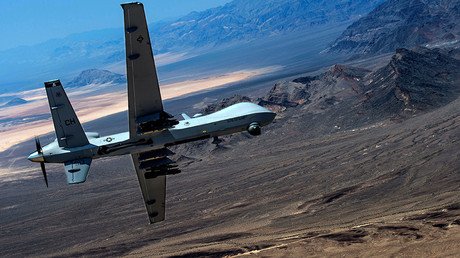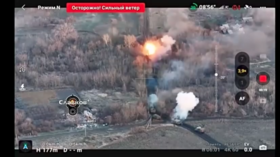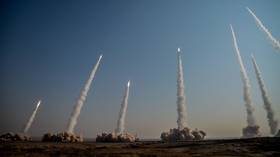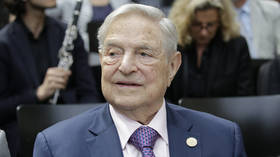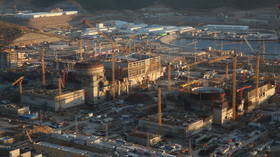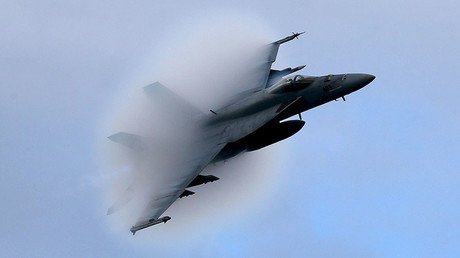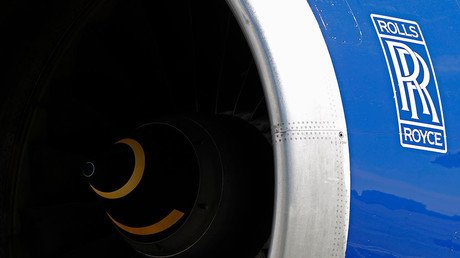Boeing unveils giant tanker drone for US Navy’s 'Stingray' competition
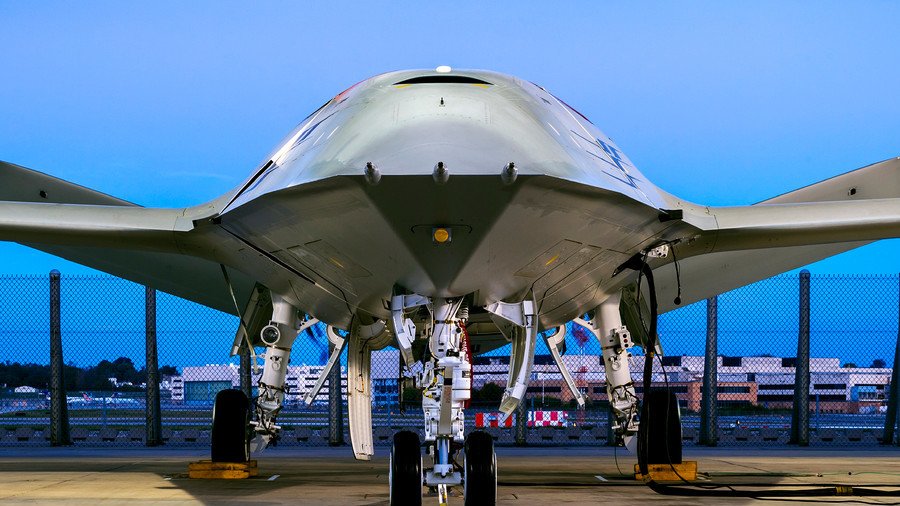
Boeing has released a photo of an aerial refueler drone it has designed for a US Navy competition. The military contest is seeking the best unmanned aircraft system (UAS) to refuel Navy jets operating from aircraft carriers.
The enormous drone, a photo of which was released on Tuesday, represents Boeing's entry into the US Navy’s MQ-25 Stingray competition. The navy issued its final request for proposals in October, with an entry deadline of January 3.
“It’s an aircraft with the mission in mind, and we felt confident that the wing-body-tail design was the best for the refueling mission,” Boeing spokeswoman Didi VanNierop said, as quoted by Defense News.
Flight testing will begin when the engineering and manufacturing development contract is awarded, said Don ‘BD’ Gaddis, who runs the refueling system program for Boeing's Phantom Works technology organization. Engine run tests will reportedly take place at Boeing's St. Louis, Missouri, facility.
The release comes just five days after Boeing teased the drone on Twitter. “Robust? Check. Ready? Check. Changing future air power? Check it out!” the company tweeted last Thursday.
The navy’s chosen UAS will be responsible for refueling capabilities which would extend the combat range of deployed Boeing F/A-18 Super Hornet, Boeing EA-18G Growler, and Lockheed Martin F-35C fighters. It must be able to deliver 15,000lb of fuel to those fighters when they are up to 500 nautical miles away from their carrier.
Robust? Check Ready? CheckChanging future air power? Check it out! See the reveal 12/19! #PhantomWorkspic.twitter.com/92PZCtIQP5
— Boeing Defense (@BoeingDefense) December 14, 2017
Lockheed Martin is also expected to submit a proposal, along with General Atomics, which revealed artist concepts of its tanker drone design in October. Northrop Grumman pulled out of the competition in October.
The navy is expected to commit to a vendor in summer 2018. It will initially purchase four systems before deciding whether to continue with purchasing 72 UAS units, according to the Drive.
